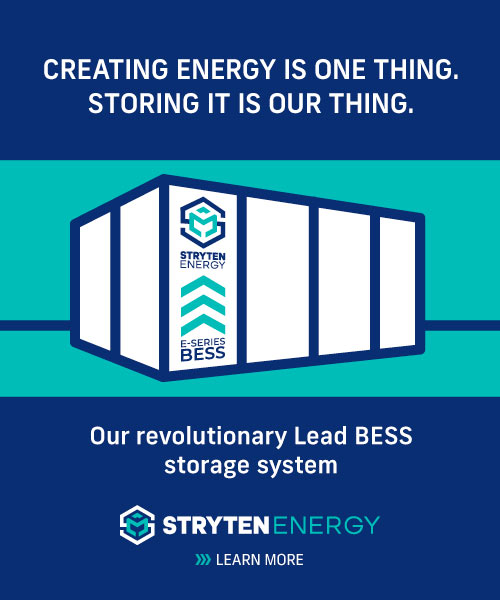Scale Model
When we look at the CRE industry over the past 30-plus years, innovation has been abundant, yet one constant that underpins the sector is the institutional model of scalable efficiency.
By Steven Bandolik and John Hagel
 When we look at the CRE industry over the past 30-plus years, innovation has been abundant, yet one constant that underpins the sector is the institutional model of scalable efficiency. If the term seems unfamiliar, the concept is well known: As infrastructure and technology improve, companies reap the benefits of increased scale by growing larger and producing more, thus cutting costs and improving margins. Businesses achieve scalable efficiency by specifying, standardizing and integrating activities.
When we look at the CRE industry over the past 30-plus years, innovation has been abundant, yet one constant that underpins the sector is the institutional model of scalable efficiency. If the term seems unfamiliar, the concept is well known: As infrastructure and technology improve, companies reap the benefits of increased scale by growing larger and producing more, thus cutting costs and improving margins. Businesses achieve scalable efficiency by specifying, standardizing and integrating activities.
While this model provides consistency and predictability, it also severely limits flexibility. In an environment where digital innovation, economic policies and demographic trends demand extraordinary nimbleness, the constraints imposed by scalable efficiency can be damaging: During the past 40 years, returns on assets for all U.S. public companies have declined by 75 percent.
The next frontier
So far, the commercial real estate industry has bridged this challenge by embracing innovation and tweaking business models piecemeal. But as we look to the next 30 years, a fundamental shift is essential.
The business world has reached a point where success is no longer defined primarily by scale or stockpiles of knowledge but by the ability to learn and adapt rapidly. This revolutionary approach to innovation, known as scalable learning, can redefine organizations from their operations to the space they occupy.
The fundamental goal of scalable learning is to create smarter companies that thrive in our era of exponential change, increasing the flow of information to boost adaptability and innovation. Helping teams handle situations they have never faced before improves performance more quickly and builds new knowledge.
Taking the leap
In commercial real estate, the key question is how to redesign the work environment in making the transition to scalable learning.
The answer is difficult to nail down, since redesign affects all elements of the work environment and should always be undertaken with an eye toward improving performance. Unlike most physical assets and intellectual property, which tend to lose value over time, workers can continually reinvent themselves and push the limits of performance.
Amplifying the efforts of employees calls for rethinking physical, virtual and management systems. Traditional boundaries must be challenged, since truly scalable learning requires collaboration with an expanded network of trusted third parties who can help overcome hurdles to accelerating improvement.
As we see it, scalable learning presents two big opportunities:
■ The redesign of buildings to enhance scalable learning for occupants, operators and owners. Such redesigns are expensive, and it can be difficult to quantify their benefits. However, building adaptable office space can yield financial benefits. For instance, modular furniture arrangements can promote casual interactions that encourage collaboration and the flow of information. Fortunately, the idea of designing for these unprogrammed encounters, even by means of low-cost examples like a centrally located water cooler, is gaining traction. Modular desk arrangements and telecommuting options reduce both the company footprint and company expenses.
■ The redesign of traditional CRE functions. Innovation often emerges from experimenting with processes and products, and one way to boost creativity is to encourage faster, bolder experimentation. Consider, for example, how engineers’ ability to quickly design, test and refine pre-fabricated construction components can significantly cut development costs.
As these examples illustrate, this is not just an opportunity for real estate companies. Customers, too, can reap the rewards of occupying facilities that accelerate learning and improved performance.
Of course, there are many more approaches than the examples we’ve detailed here. Making the transition from scalable efficiency to scalable learning offers vast long-term benefits that can far outshine layoffs and other shorter-term measures. By pursuing institutional innovation, we can unlock the unlimited potential of our team members, our organizations and our customers.
 Steven Bandolik is a managing director with Deloitte Services LP and a senior leader in Deloitte¹s real estate services practice. A three-decade industry veteran, Bandolik provides advisory services in a wide range of areas, including capital markets, corporate finance, mergers and acquisitions, investments, restructuring and reorganization, workout and asset recovery.
Steven Bandolik is a managing director with Deloitte Services LP and a senior leader in Deloitte¹s real estate services practice. A three-decade industry veteran, Bandolik provides advisory services in a wide range of areas, including capital markets, corporate finance, mergers and acquisitions, investments, restructuring and reorganization, workout and asset recovery.
 John Hagel is the co-chairman of the Deloitte Center for the Edge. He has nearly 30 years of experience as a management consultant, author, speaker and entrepreneur, and has helped companies improve performance by applying IT to reshape strategies. In addition to serving in leadership roles at top consulting firms and companies, John is the author of such bestselling business books as Net Gain, Net Worth, Out of the Box, The Only Sustainable Edge, and The Power of Pull.
John Hagel is the co-chairman of the Deloitte Center for the Edge. He has nearly 30 years of experience as a management consultant, author, speaker and entrepreneur, and has helped companies improve performance by applying IT to reshape strategies. In addition to serving in leadership roles at top consulting firms and companies, John is the author of such bestselling business books as Net Gain, Net Worth, Out of the Box, The Only Sustainable Edge, and The Power of Pull.
Originally appearing in the June 2017 issue of CPE.








You must be logged in to post a comment.